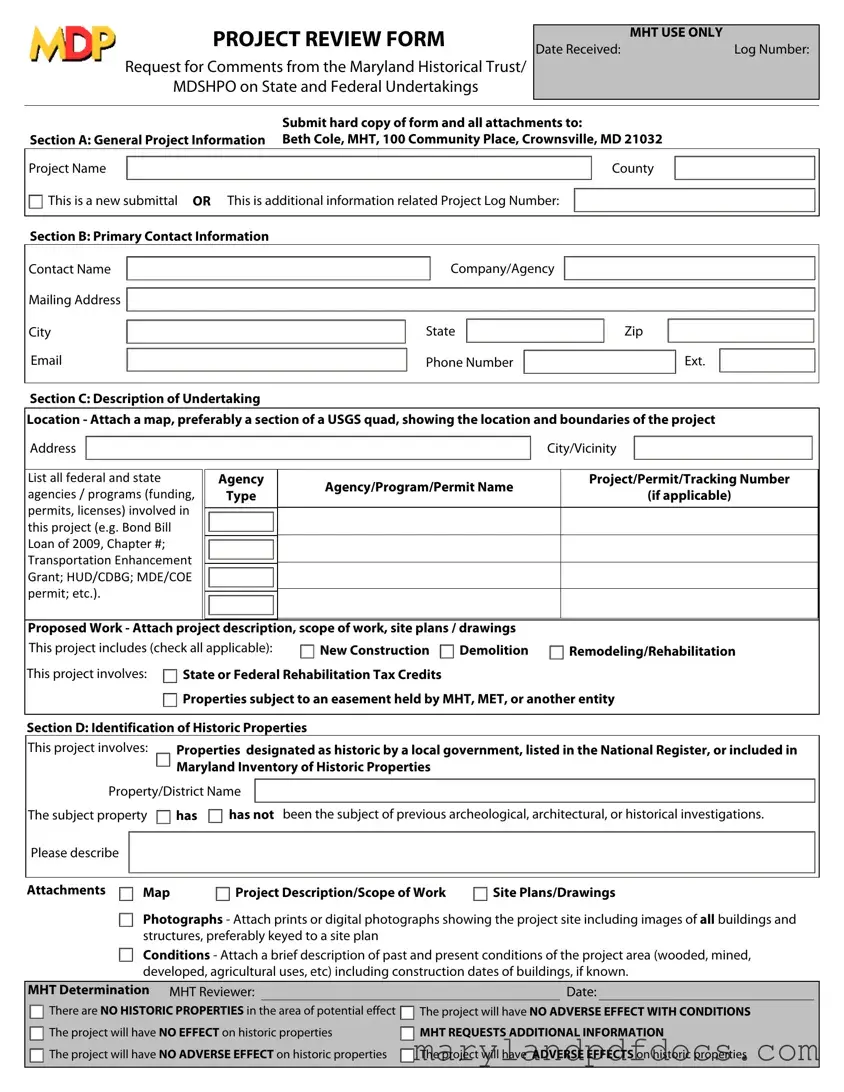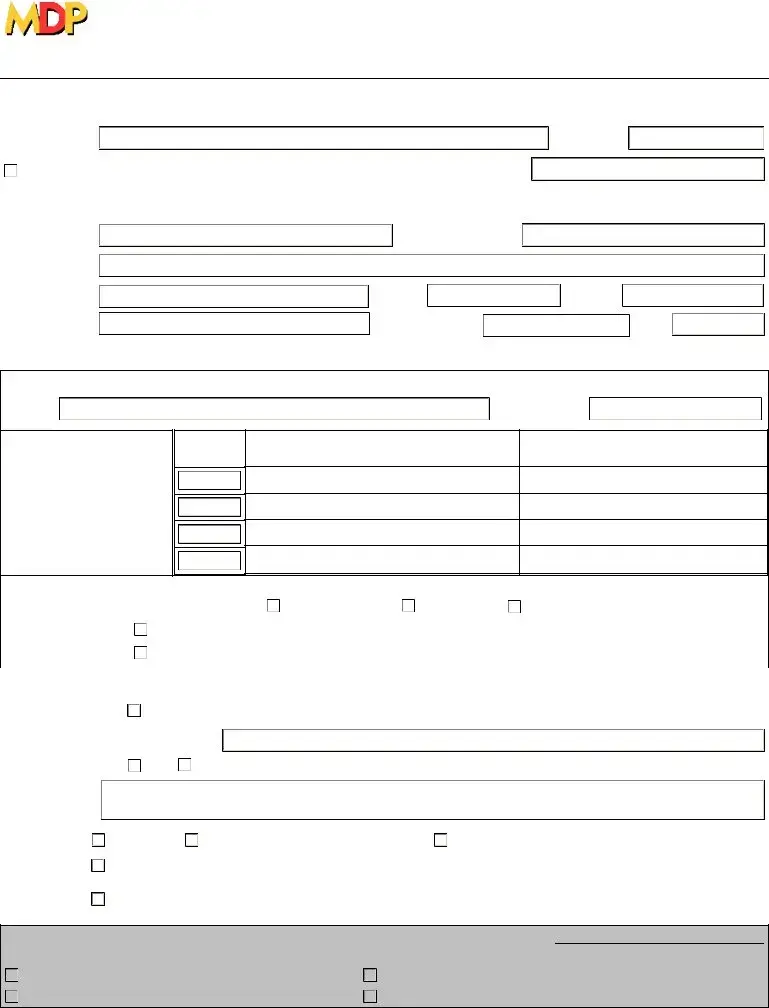What is the purpose of the Maryland Project Review Form?
The Maryland Project Review Form is designed to request comments from the Maryland Historical Trust and the Maryland State Historic Preservation Office on various state and federal undertakings. It helps ensure that any potential impacts on historic properties are considered during project planning and implementation.
Who needs to fill out this form?
This form must be completed by individuals or organizations involved in projects that may affect historic properties. This includes developers, government agencies, and any other entities seeking permits or funding for their projects.
What information is required in Section A of the form?
Section A requires general project information, including the project name, county, and whether this is a new submission or additional information related to an existing project. If it’s the latter, you will need to provide the project log number.
What should I include in Section C regarding the description of the undertaking?
In Section C, you should provide a detailed description of the project's location and attach a map, ideally a section of a USGS quad. You also need to list all federal and state agencies involved, along with their respective programs or permits related to the project. Additionally, include a project description, scope of work, and any relevant site plans or drawings.
What types of projects are covered by this form?
The form covers a wide range of projects, including new construction, demolition, and remodeling or rehabilitation. If your project involves state or federal rehabilitation tax credits or properties under easements, this form is also applicable.
How do I identify historic properties in my project area?
You will need to indicate if your project involves properties designated as historic by local government or listed in the National Register. You should also check if the property has been previously investigated for archaeological, architectural, or historical significance and provide details if applicable.
What attachments are necessary when submitting the form?
When submitting the form, you must include several attachments. These include a map of the project area, a project description or scope of work, site plans or drawings, photographs of the project site, and a brief description of past and present conditions in the area.
What happens after I submit the form?
Once the form is submitted, it will be reviewed by the Maryland Historical Trust. They will determine whether there are historic properties in the area of potential effect and assess the project's impact on those properties. You will receive feedback regarding any additional information needed or the project's potential effects.
What if my project has adverse effects on historic properties?
If the Maryland Historical Trust determines that your project will have adverse effects on historic properties, you may need to take additional steps to mitigate those effects. This could involve redesigning aspects of the project or conducting further studies to assess the impact.
Where should I send the completed form?
The completed form, along with all attachments, should be mailed to Beth Cole at the Maryland Historical Trust, located at 100 Community Place, Crownsville, MD 21032.


 There are
There are  The project will have
The project will have